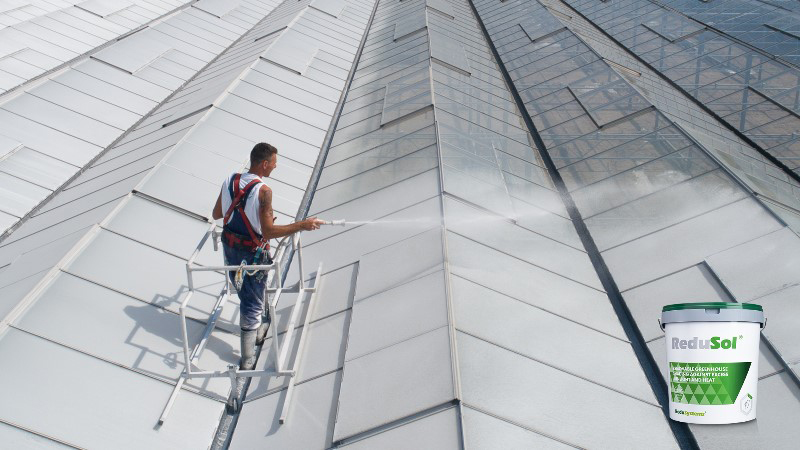Smart Benching
Let’s face it, costs for just about every component of your greenhouse operation are up these days. Minimum wages continue to increase, energy costs have sky rocketed and materials like chemicals, fertilizers and growing media are near an all-time high.
Those costs are a reality, but there are ways around them. Investments in equipment and automation will reduce your dependence on employees, an alternative heating system can pay big dividends and a handful of generic products and materials prove reliable.
An investment in benches or a bench system is an option for growers interested in cost savings, as well. The payback is more long term, but the savings are indeed real if growers are willing to make long-term commitments to benching.
Pike Bartlett, founder of Bartlett Bench & Wire, says uncertainty about the economy and weather and their effects on the market had growers in a short-term state of mind this spring. For the most part, the weather this spring was more cooperative than in 2008, and retail reports were mostly positive.
So now is the time Bartlett expects growers to continue making investments in their operations, benching included. The labor savings of picking product up off the floor and putting it on the bench are tremendous, he says.
“The climate on the floor isn’t the best,” Bartlett says. “You control your air circulation much better on the bench, and moveable tables and rolling benches are going to save space, which is getting more important.”
Bartlett also says a high-tech bench system can lower energy costs.
“If you have five greenhouses with stationary benches, you can grow the same number of plants on rolling benches or movable tables in four of those houses,” he says. “If you don’t grow anything in the fifth house, you’ll cut back your heating costs by 20 percent.
Less Back-Breaking Work
Danny Takao, president of Takao Nursery in Fresno, Calif., uses an Agra Tech rolling bench system for propagation at his operation. The benches make sanitary sense for Takao’s young plants, but they also prevent his employees from straining their backs.
“If you want long-term employees, then benches make sense,” Takao says. “If employees are constantly bending over all day long, it’s great for the waist but terrible on the back. Benches are expensive, but if you get one bad-back claim as an employer, an investment in benches will pay for itself in the long run.”
Employees, particularly ones who’ve experienced growing on the floor, will also appreciate the investment. Benches show the grower cares. An installation is a great motivator, and employees ultimately will be more efficient. Before Takao installed a rolling bench system in his new greenhouses, he studied the movement of people in and out of benches and tried to maximize the footprint of the bays with the shortest walking distance.
Takao also believes in benching because of his experience growing up without it.
“When I was in high school, I worked at an outdoor shrub nursery in the summer,” Takao says. “That left a lasting impression in my mind. When I could afford to bench my new greenhouses, I included them in the design and budget. No regrets.”
Ebb-Flow Benching
Midwest Gromaster’s Bruce Zierk, like Bartlett and Takao, is a believer in benching. Midwest Gromaster’s primary products, however, are Ebb-Flo benches, which save 90 percent on water, fertilizer and watering labor.
A few years ago, growers looked at ebb-and-flo benches as an investment they couldn’t afford. Now, Zierk says growers are set on finding ways to lower labor costs permanently. Ebb-and-flo benches are a solution.
“‘I’ll ask growers what they’re spending on a metal bench and what kind of irrigation system they’re using,“ Zierk says, “and they quickly realize the cost is in the same ballpark.
“Ebb-flow benches save tremendous labor. They save a huge amount of water and fertilizer compared to other systems. You have great flexibility because you can put any size plants on the bench and then change to other sizes when needed.”
Smaller growers were among the very first to invest in ebb-and-flo benches years ago, Zierk says, but the system is applicable to all growers. Midwest Gromaster and other ebb-and-flow bench suppliers will also advise and furnish on all the plumbing and controls necessary to get systems started.
“There are many other advantages,” Zierk says. “A lot of people have commented that with poly greenhouses, the ground is not wet and thus plants are not wet. So there’s much less humidity pressure in the greenhouse. There’s also no weeds on the bench, no fungus gnat problems and no mess under the bench.”
Ken James, a propagator who owns James Greenhouses in Colbert, Ga., uses ebb-and-flo benches from Midwest Gromaster. He agrees about the cleanliness of the system.
“We chose it mainly because of sanitation and air flow,” he says. “We have 300 varieties and they’re mixed on different benches. The flood uniformity is exceptional. We rarely have to water a corner or edge of a bench by hand.
At James Greenhouses, one assistant grower spends about two hours each day managing the acre of liners in which the ebb-and-flo system sits. In that two hours, James says the benching system waters more than 1 million 72-cell plants. “Normally, we would have three times that amount of labor.”
And how about the return on investment at James Greenhouses?
“On sheer labor and fertilizer use, I can rationalize the return over a number of years,” James says. “It’s longer than three, four years for us, but the return on quality and ease of operation of the facility in my mind is worth the investment.”








